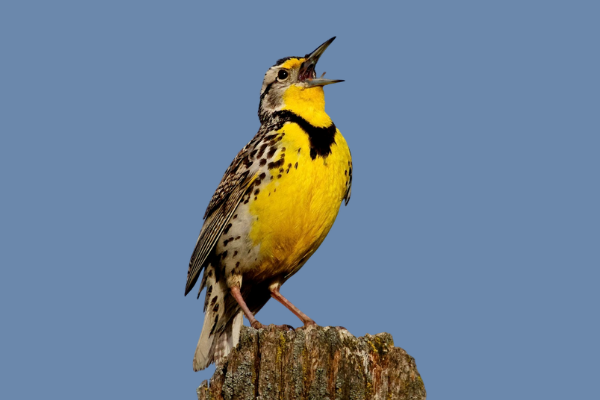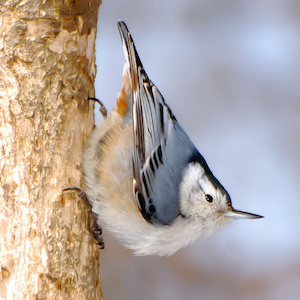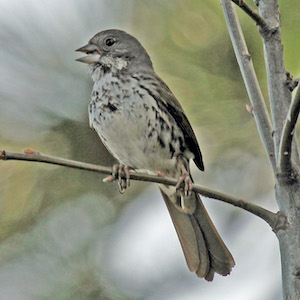I find myself in full agreement with William Dawson (Birds of California, 1923) when he says,
“It is impossible not to rhapsodize over the Meadowlark. He is a rhapsodist himself. Born of the soil and lost in its embraces for such time as it pleases him, he yet quits his lowly station ever and again, mounts some fence-post or tree-top, and publishes to the world an unquenchable gladness in things-as-they-are.”
Indeed, I confess to some western chauvinism in feeling that we got the better meadowlark, at least song-wise. And Dawson agrees,
“The Meadowlark of the East has a poet’s soul, but he lacks an adequate instrument of expression. His voice does not respond to his requirement. Perhaps his early education, as a species, was neglected.”
As a recordist in the west one quickly learns that, even on a morning when other birds are not cooperating, most any grassland will ring with their loud and lovely songs. Such was my recent experience in eastern Sacramento County. Things were mostly quiet, but the meadowlarks were singing everywhere. The bird below switches between two of his song types (each male has a half-dozen or so song types in his repertoire).
In the first segment he sings the first song type twice, and in the second sings a different song type twice:
Spectrogram recorded and produced by Ed Pandolfino
If you listen carefully to the songs of Western Meadowlarks (especially in spring) you will often hear a dry rattle beginning during the song and continuing a bit beyond. This rattle is given by a female meadowlark duetting with her mate! Here is one example from that same morning where you can hear (and see) the rattle starting during and continuing after the male song:
Spectrogram recorded and produced by Ed Pandolfino
And here is a different Western Meadowlark who sang for some time without being accompanied by a female (no hint of a rattle). Perhaps an unpaired male?
Spectrogram recorded and produced by Ed Pandolfino
Now here is where I felt like I might have been eavesdropping on a bit of meadowlark drama. This male (a different individual from any of the ones recorded above) sang a few times with no duet.
Spectrogram recorded and produced by Ed Pandolfino
Then a different male sang in the distance with his mate rattling though his song.
Spectrogram recorded and produced by Ed Pandolfino
Perhaps in response to this nearby pair duetting, a female came closer to the first male, rattled (at 0.5 seconds), came still closer and rattled again (at 4.5 seconds), and then flew in close and duetted with the first male (at 9 seconds).
Spectrogram recorded and produced by Ed Pandolfino
Was this female trying to make sure other females knew her mate was paired? Western Meadowlark males are commonly polygamists, but some do contribute a bit to feeding young. Maybe maintaining a stronger bond increases the chance he will help her with the kids?? So many questions…

Western Meadowlark nestlings. Photo by Rudy Salakory/Flickr.






